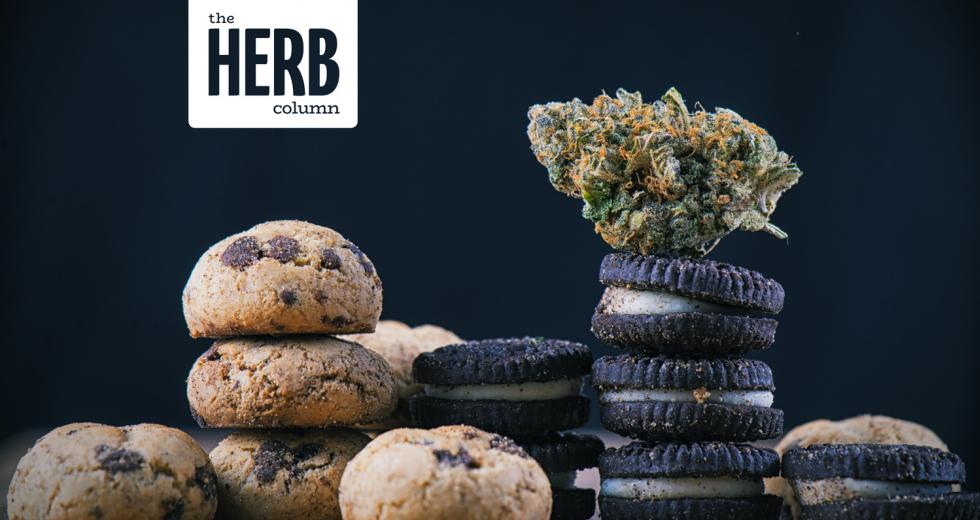To many consumers, the idea of edibles — cannabis-infused chocolate bars, brownies and other treats — sounds enticing. Especially considering health concerns about cigarettes have made people uncomfortable with smoke, including from marijuana.
Cannabis consumption is becoming part of the foodie scene, following the legalization of recreational weed for adults in California with the passage of Proposition 64. As a testament to this trend, Netflix has created a new show, Cooking on High, featuring comedian and cannabis connoisseur Ngaio Bealum of Sacramento.
Inexperienced cannabis users can become familiar with edibles by visiting one of Sacramento’s 30 dispensaries — where some of the products are locally made by four Sacramento manufacturers. Consumers can’t eat marijuana edibles at restaurants yet because state regulations prohibit it. (The state’s top cannabis regulator has said this is an issue that needs to be addressed in the near future.)
But users need to exercise caution: Edibles come with risks not inherent in joints and other marijuana products. You can’t taste the cannabis in an edible, making it all the more difficult to gauge the amount of ganja in there. Know what you’re eating before you gobble up that bag of cannabis gummies.
Dispensaries have staff on hand to provide guidance to consumers unfamiliar with edibles. At A Therapeutic Alternative on H Street, employees — called budtenders — wear medical scrubs and talk about cannabis with the precision a doctor might use to explain antibiotics. The State of California has no requirements for what budtenders must know, but the City of Sacramento — working with Kimberly Cargile, owner of A Therapeutic Alternative — is developing standards for the local industry.
Danny Kress worked for a local health-care company before becoming the dispensary manager at A Therapeutic Alternative. “What’s your experience so far? What are your intended effects?” Kress will ask a customer the first time he or she wants to try edibles.
A person consuming edibles for the first time should not eat more than 5 milligrams of THC, the psychoactive component of cannabis, Kress says. State law requires the labeling on edibles to say how much THC is in the package and in each serving, but a consumer can’t eat much before hitting the limit. For example, just one honey mustard pretzel by VCC Brands contains 3 mg of THC. State regulations limit a package of edibles to 100 mg and servings to 10 mg. So to stay within Kress’s limit, a consumer can only eat half of one of the 10 pieces in a chocolate bar. Consumers gain tolerance to the psychoactive effects over time, meaning they can increase their dosage.
When smoking cannabis, the effect is pretty much instantaneous. It takes much longer when eating cannabis, because it is processed through the body’s liver. Wait four hours or longer before trying more edibles, Kress advises.
Eating THC produces a result that is five times more psychoactive than smoking it, Kress says. Generally speaking, the result is more sedative than from smoking weed. “Edibles are far more psychoactive. That’s why dosing levels are extremely important,” Kress says.
Eating too much THC can produce symptoms not unlike those from ingesting too much alcohol — nausea, head spins and a generally uncomfortable feeling, according to Kress. However, unlike alcohol, there have been no recorded incidents of death in the U.S. by marijuana overdose.
After Colorado became the first state to legalize weed in 2014, New York Times columnist Maureen Dowd gave the nation a blow-by-blow account of what happens when you consume large doses of THC. Dowd decided to try a cannabis-infused candy bar inside her Denver hotel room. She ended up plastered on her bed for hours, at one point convinced she was dead.
Related: Budtenders may become the new drug educators in Sacramento
Related: Where Did All the Cannabis Watchdogs Go?
Dowd acknowledged that she likely consumed more than the 1/16th an expert said would have been safe for her. That information wasn’t on the label — something California and other states have been quick to correct, by mandating that serving sizes be listed.
Some of the biggest scare stories in the short history of legal weed are the result of people consuming too much of an edible — and when authorities were still learning how to regulate edibles and other cannabis products. One case occurred after a college student bought medicated cookies for herself and her friends from a Denver dispensary. According to Bruce Barcott’s book, Weed the People, the budtender told her to cut each cookie into six pieces. One of her friends ate the whole cookie. He later panicked and ran out of their hotel room, tumbling over a railing and dying from the fall. The autopsy report stated that “Marijuana intoxication is a significant contributing factor” in his death.
The tragedy helped us learn how much THC can be safely consumed. Stick to dosing guidelines and you’ll be giggling, not freaking out — while those cookies might be tasty, you can really only have half of a mini-cookie.
In Sacramento, edible manufacturers want to make safe products that build on the region’s agricultural strengths, including its claim to fame as the farm-to-fork capital of the U.S.
“Sacramento is experiencing a real renaissance, driven in large part by the farm-to-fork movement, which was a main factor in deciding to relocate here from the Bay Area,” says Mike Appezzato of GOOD CO-OP, an edibles manufacturer in South Land Park. “Not only do we see the region’s agricultural strength as boon for the cultivation sector, we see it as a benefit to edible manufacturers who can easily source high-quality, local ingredients for their products.”



